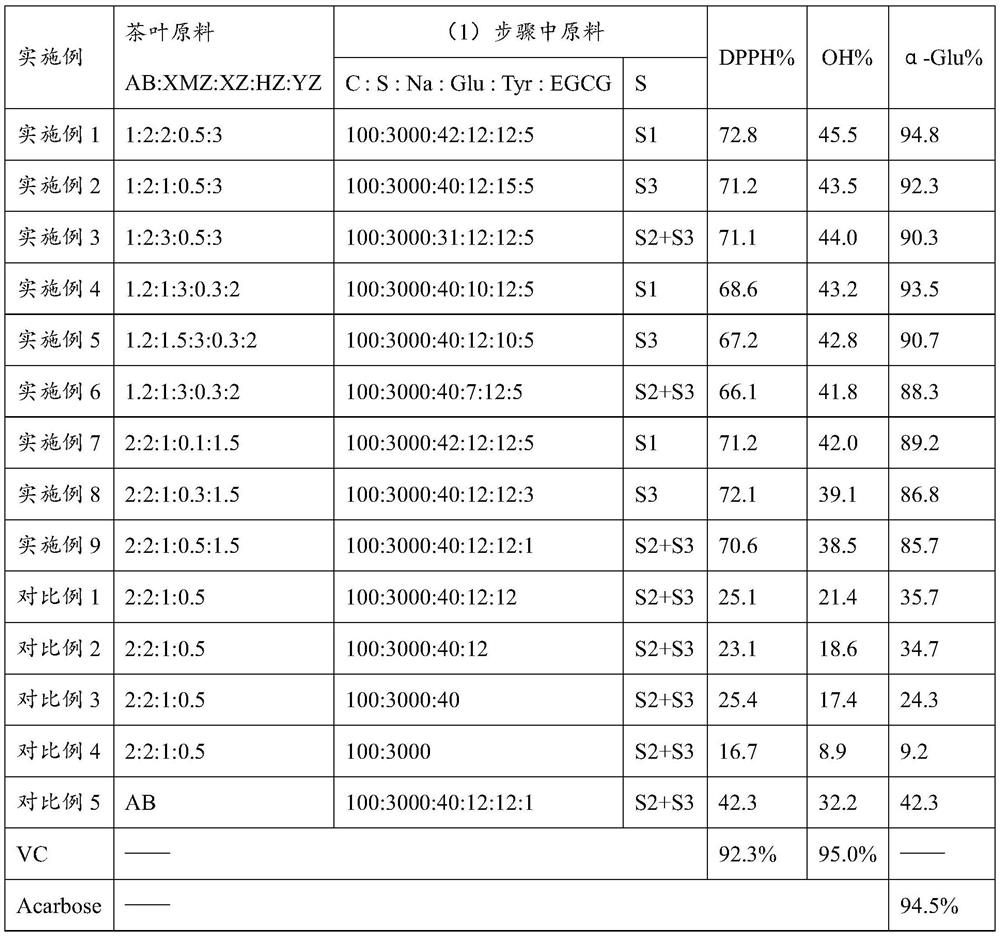Tea extract and preparation method and composition thereof
A tea extract and tea technology, applied in the fields of biochemistry and natural products, can solve problems such as unstable properties, anti-inflammatory and anti-oxidation effects, and achieve the effect of simple method, preventing hydrolysis, and preventing loss of activity
- Summary
- Abstract
- Description
- Claims
- Application Information
AI Technical Summary
Problems solved by technology
Method used
Image
Examples
preparation example Construction
[0014] Example Tea Extract and Preparation of Compositions
[0015] A preparation method of tea extract, comprising the following steps:
[0016] (1): After the tea leaves are crushed, they are added to a 10-20% volume ratio acid solution for 30-35 minutes, and then sodium chloride, glutamic acid, tyrosine, and gallic acid ester are added, and the temperature is 80-100°C React for 2-5h, filter after the reaction;
[0017] (2): The filtrate obtained in step (1) is distilled under reduced pressure, and the temperature is controlled not to be higher than 60° C. to obtain the tea extract. Specifically, the obtained tea extract is a paste.
[0018] The tea leaves are selected from one or more of green tea, white tea, black tea, green tea and black tea. Specifically select 5 kinds of mixed tea leaves, namely: Mingfeng 800 (AB, place of origin: Huzhou, Zhejiang), Xinyang Maojian (XMZ, place of origin: Xinyang, Henan), Xiushui Tianxiang (XZ, place of origin: Yichang, Hubei), Honga...
Embodiment
[0023] The mensuration of embodiment DPPH free radical scavenging rate (recorded as DPPH%)
[0024] Take 1mg, 200mg / mL tea extract or standard mixture dilution and 2mg DPPH ethanol solution (25mg mL-1), vortex mix, react in 37℃ water bath for 30min, measure the absorbance at 517nm Asample. At the same time, mix 2mL of absolute ethanol with 2mL of the extract to measure the absorbance value Acontrol, and replace the tea sample with an equal amount of absolute ethanol to measure the absorbance value and mark it as Ablank. In this study, Vc (vitamin C) was used as a positive control. DPPH free radical scavenging rate=[1-(Asample-Acontrol / Ablank)]×100%. Asample represents the absorbance of the sample (tea extract and DPPH ethanol solution), Ablank represents the absorbance of the blank sample (tea extract and ethanol), and Acontrol represents the absorbance of the control group (ethanol and DPPH ethanol solution).
[0025] Embodiment The determination of hydroxyl radical sca...
PUM
 Login to View More
Login to View More Abstract
Description
Claims
Application Information
 Login to View More
Login to View More - R&D
- Intellectual Property
- Life Sciences
- Materials
- Tech Scout
- Unparalleled Data Quality
- Higher Quality Content
- 60% Fewer Hallucinations
Browse by: Latest US Patents, China's latest patents, Technical Efficacy Thesaurus, Application Domain, Technology Topic, Popular Technical Reports.
© 2025 PatSnap. All rights reserved.Legal|Privacy policy|Modern Slavery Act Transparency Statement|Sitemap|About US| Contact US: help@patsnap.com

